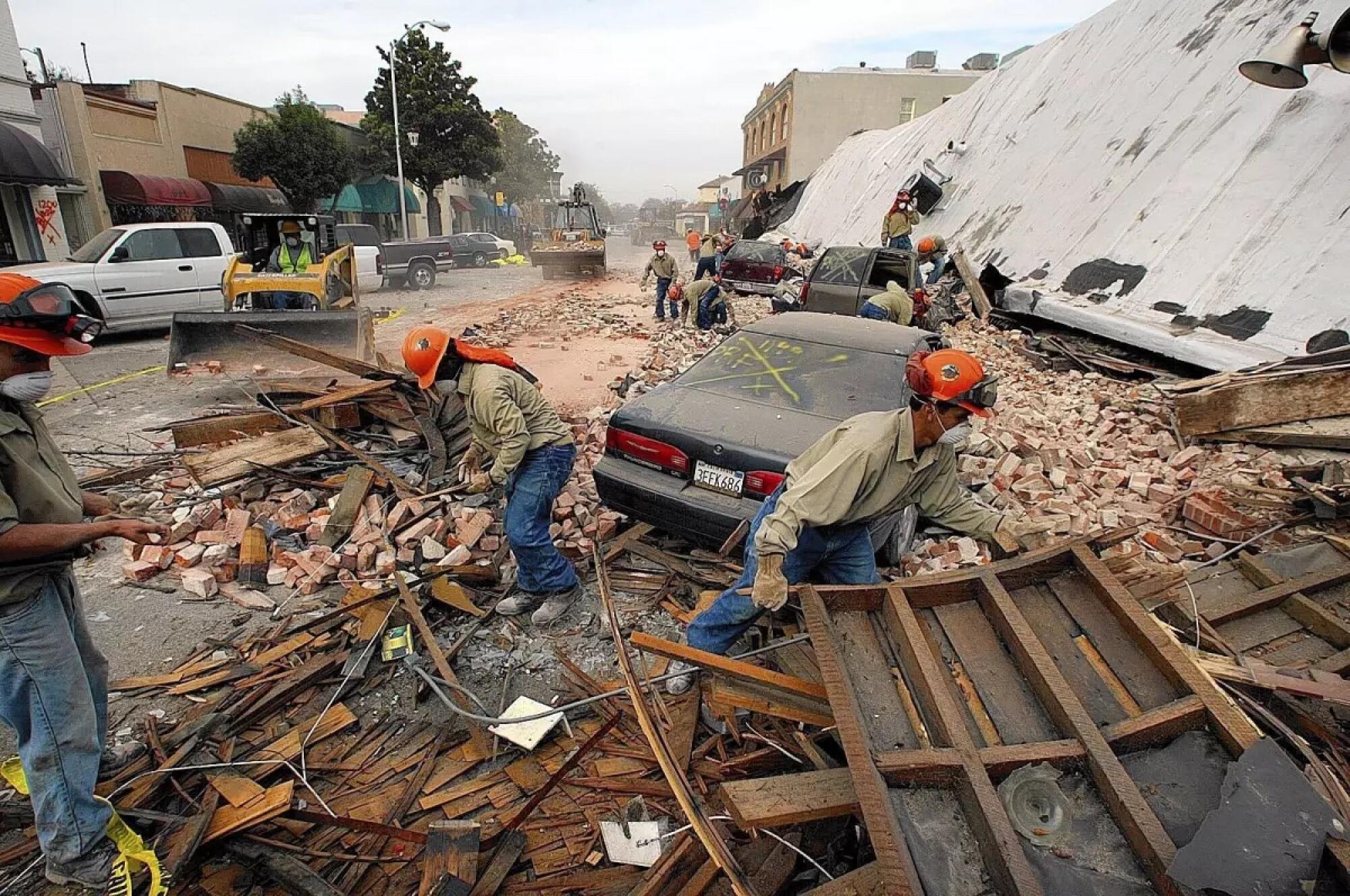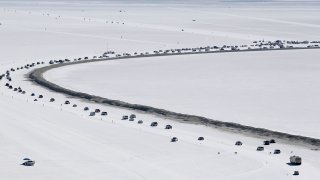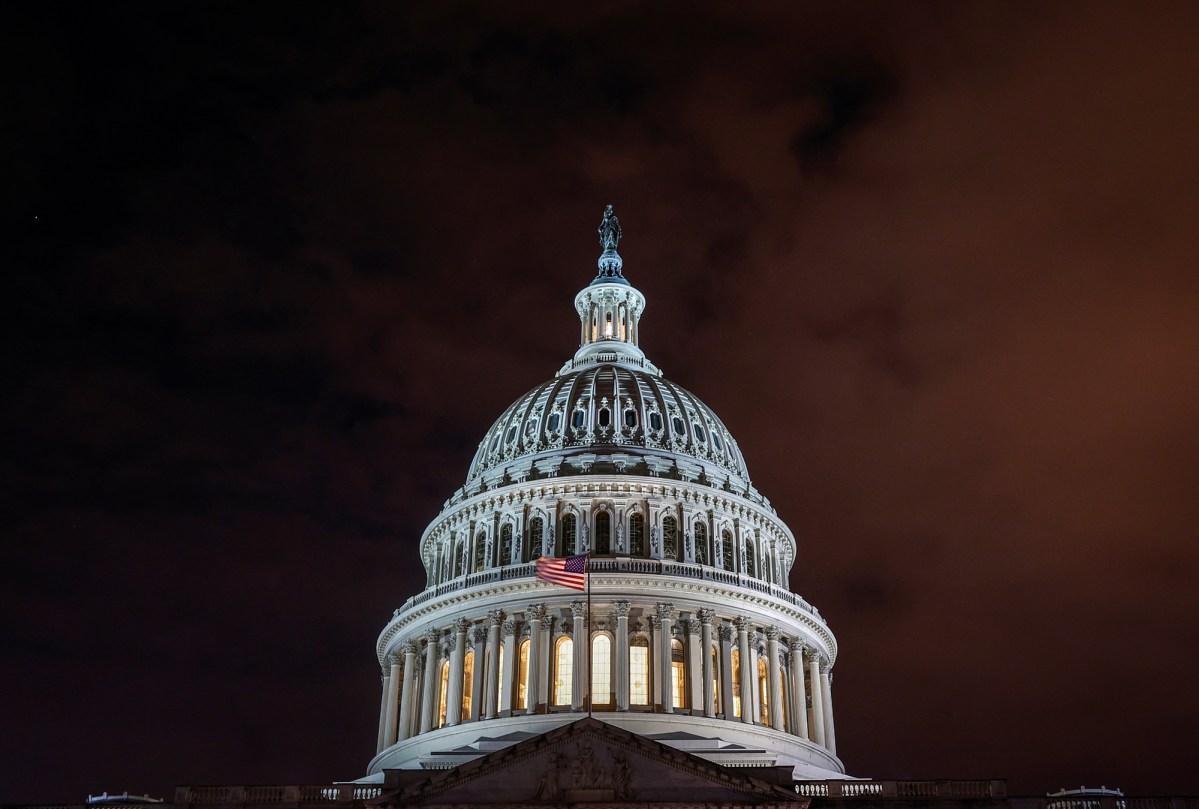Today marks one hundred years after an earthquake centered just offshore wrecked downtown Santa Barbara.
State Street, the primary business district, was in ruins. The strength of Mother Nature exposed the weaknesses in the designs of certain buildings, causing them to completely collapse. There were perhaps a dozen fatalities.
Even in a state known for its shaking, the great Santa Barbara earthquake is still mostly unknown seismically, despite the devastation.
There are several explanations for this, including the relatively low death toll and deliberate attempts by modern civic advocates and commercial interests to minimize the severity of the harm.
However, experts say that even after a century, the lessons learnt from the Santa Barbara earthquake should still be relevant in a state where the next Big One is a constant threat.
For example, brick buildings have long been regarded by structural engineers as one of the most deadly building forms in the event of an earthquake. Additionally, the Santa Barbara earthquake demonstrated the potential dangers of brick structures constructed during that time period.
However, from the 1933 Long Beach earthquake to the 2003 San Simeon earthquake, which killed two women as they fled a brick building in Paso Robles that was originally constructed in the late 1800s, little was done for decades to compel brick buildings throughout California to be retrofitted. This inaction had fatal results, according to seismologist Lucy Jones, a research associate at Caltech.
According to Jones, one of the most important lessons is that we have always tended to go for the bare minimum because we are scared to dictate to others what they should do with their own property. This is how a building survived for almost a century without undergoing a crucial earthquake retrofit until its brick walls collapsed in 2003.
San Francisco in 1992, Santa Barbara in 1990, and Los Angeles in 1981 all implemented mandatory retrofit ordinances to address these vulnerabilities after car commuters were killed when a brick wall collapsed during the Loma Prieta earthquake in 1989.
However, several cities in the Inland Empire, which is home to the notorious San Andreas fault, have yet to take action to mandate that unretrofitted brick buildings be repaired or demolished.
Additionally, many cities have not taken any action to mandate the retrofitting of other kinds of potentially dangerous structures, such as those with specific defects in their steel or concrete frames.
For example, there is no rule in Santa Barbara mandating apartment buildings with a thin ground floor—typically supported atop a garage or carport—to undergo seismic retrofit. Cities like San Francisco and Los Angeles have obligatory retrofit regulations aimed at these soft-story structures because of their well-known vulnerabilities.
According to structural engineer Sage Shingle, a principal at T&S Structural and a member of the Structural Engineers Association of Southern California, “I know it’s been discussed in Santa Barbara, but nothing has ever come of it.” Naturally, Santa Barbara is more vulnerable than it has to be because these buildings are not required to be strengthened, he said.
Single-family homes in Santa Barbara suffered severe damage a century ago as well. They were braced and fastened down and slipped off their foundations, a structural defect that many residents still experience today. (To encourage homeowners to fix the problem, a state program pays subsidies.)
The collapse of brick and stone along Santa Barbara’s State Street, however, was the most noticeable devastation caused by the 1925 earthquake.
According to Shingle, the external brick walls of the four-story Hotel Californian, which had opened around a week prior to the earthquake, began to peel away from the wood flooring.
According to architect Greg Rech, head of the Architectural Foundation of Santa Barbara, there were a few locations in Santa Barbara were individuals were murdered by the facade alone collapsing onto the sidewalk.
When a significant earthquake occurred in Long Beach in 1933, California discovered the perils of brick construction.
The 1925 earthquake also caused significant damage to the renowned Arlington Hotel. It was constructed with a water tank to store supplies for future firefighting operations after its predecessor burned down in 1909 and opened in 1911, according to Shingle. However, Shingle claimed that when the weight of the tank was struck by the shaking of the earthquake, its mass simply tore the building apart there, causing that section of the structure to collapse. Two hotel guests lost their lives.
Earthquake science was still in its infancy a century ago. According to Susan Hough, a seismologist with the U.S. Geological Survey, there was still disagreement before 1925 on the extent of the earthquake risk in Southern California, and Los Angeles specifically. This may seem unthinkable now.
There were two schools of thought. The first maintained that the Los Angeles region was extremely vulnerable to earthquakes. Another group was claiming that although earthquakes did occur, the danger was merely minor, according to Hough.
According to Hough, the debate was not resolved by the 1925 earthquake. The Santa Barbara earthquake, which was assessed to be between magnitudes 6.5 and 6.8, occurred in the same year as an earthquake in Quebec, Canada, which is currently estimated to be magnitude 6.2. However, we now know that the Quebec earthquake’s broader geographic reach was caused by older rocks in eastern North America, which make it easier for seismic waves to move there than in California.
However, at the time, others said that earthquakes were a greater concern for Quebec than Southern California because of the shaking’s narrower geographic reach surrounding Santa Barbara. “Yes, there are earthquakes in California, but the effects aren’t as widespread,” Hough argued.
According to Hough, 1925 didn’t have the impact it may have on risk reduction and public awareness.
According to Hough, the commercial interests also made an attempt to minimize the risk. It was believed that frightening people would not accomplish anything positive.
California
Southern California has experienced a number of noteworthy earthquakes in recent months, serving as a warning that the relative seismic calm of the previous three decades will not persist indefinitely.
Although it was widely acknowledged by 1906 that the San Francisco Bay Area was at great risk of earthquakes, some people in the Los Angeles area had a different opinion. Seismic minimizers had another chance to argue that mild earthquakes on local faults would only produce small, limited damage, according to the USGS, after the Inglewood earthquake of 1920, which was estimated to have been 4.9 on the Richter scale and had its epicenter in Santa Monica Bay.
We do get earthquakes, it seems. Hough claimed that although they are an annoyance, they cause no harm. They claimed that the faults they mapped in the Los Angeles area were not active.
Furthermore, the theory of plate tectonics, which we now know explains why California is especially susceptible to earthquakes, had not yet been developed by scientists.
It wasn’t as though everyone was totally unaware of the risks, though. People were aware of the risk of fires following the 1906 San Francisco earthquake and a 1923 magnitude 8 earthquake and firestorm that devastated Tokyo and Yokohama, causing an astonishing142,800deaths, according to the USGS.
California
A long-feared monster earthquake off the coast of California, Oregon and Washington could cause some areas to sink by more than 6 feet, dramatically heightening the risk of flooding.
In the first moments after the 1925 earthquake, there were three men who turned off the gas, the water and the electricity. According to Santa Barbara historian Betsy J. Green, we therefore did not have the fires.
The earthquake did prompt Santa Barbara to adopt codes citing earthquake safety related to construction of new buildings the first a local government in California had ordered, according to the Blume Earthquake Engineering Center atStanford University.
Following the 1933 Long Beach earthquake, which shocked Californians by destroying 70 schools and killing 120 people, more action was taken. According to the California Geological Survey, the number of people killed or injured could have been in the thousands if the earthquake had occurred during school hours.
The state Field Act requiredseismic safety standardson newly built public schools. And the stateRiley Act, also passed in 1933, required California local governments to establish a building department and inspect new construction.
But it would take until the 1960s before California codes for new buildings became more uniform among local governments, according to the university.
As a decisive moment in Santa Barbara s history, the earthquake also offered the opportunity to reshape its look. Prior to the earthquake, urban reformers advocated for a uniform Spanish Colonial Revival architectural style to be applied throughout the city. This style includes white walls on rough stucco, numerous arches, and red tile roofs with muted blue-green window and door trim, according to Green.
A wealthy resident, Bernhard Hoffmann, not onlyboughtand restored the historic adobeCasa de la Guerradowntown, Rech said, but bought property next to it and built a complex of shops calledEl Paseo.
The idea was that they were trying to create theStreet of Spain… Santa Barbara was a tourist town even back at that time, and they really recognized that they needed to differentiate themselves from Los Angeles or San Francisco that both had a lot of Victorian architecture, Rech said.
The local city hall was also built in this style, as was the high school, Rech said.
Then the earthquake happened, and officials decided to make the Spanish Colonial Revival style mandatory in the downtown area. Some today may grouse about the rules, but it keeps Santa Barbara looking like Santa Barbara, and not Ventura or Goleta, Green said.
(Theeffort, however, had the effect of displacing the city sold Chinatown, according to the Santa Barbara Trust for Historic Preservation.)
The earthquake also severely damaged the city s oldGreek Revival style courthouse, built in the late 1800s, breaking a column and collapsing part of the jail. The county approved a Spanish Colonial Revival-style replacement, funded in part by a bond, with cost overruns paid for by taxes on oil extraction in the county, said Bob Dickey, a docent for the Santa Barbara County Courthouse.
The courthouse is now considered one of the most picturesque places to get married in a municipal county building in California.
A key aspect to Santa Barbara s recovery was that, even a century ago, it had developed itself as a tourist spot for the wealthy, and there were a number of powerful and influential people who were instrumental in sending capital and loans for the rebuilding effort, according to Green.
There was a lot of money here, Green said.










